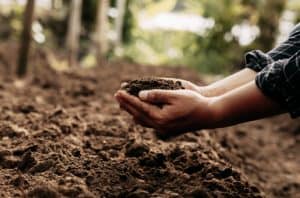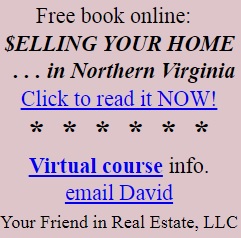 Howard Fischer, a 63-year-old investor in New York, made his wishes to his family known that he is committed to having his body composted when he dies. According to Fischer, “(w)hatever his family chooses to do with the compost after it’s done is up to them.”
Howard Fischer, a 63-year-old investor in New York, made his wishes to his family known that he is committed to having his body composted when he dies. According to Fischer, “(w)hatever his family chooses to do with the compost after it’s done is up to them.”
Michelle Skaff agrees. When she dies, she’s wants to “turn into dirt.” At 31, Michelle is healthy and very much alive and hopes to be for a long time. However, she started a payment plan that’ll enable her to eventually become compost at Return Home, a Seattle-area human composting facility. Composting of human remains involves futuristic-looking vessels full of organic material including straw, alfalfa, and sawdust that can turn human bodies back into soil by mimicking natural decomposition processes, the company says.
Howard and Michelle are not alone. The push for environmental consciousness has sparked the rise of human composting over more traditional methods. According to the National Funeral Directors Association, in 2022, 60.5 percent said they would be interested in “green” funeral options, up from 55.7 percent the prior year. Human composting is not legal in all states, however. In 2019, Washington became the first state to allow human composting, followed by Colorado, Oregon, Vermont, California, and New York.
Burials and Cremations Carry Heavy Environmental Tolls
Traditional burial procedures use the chemicals formalin, methanol, and benzene, among other toxins, during the embalming process, which have a harmful impact on soil, water systems, and the body.
Green burial practices, such as composting, leave little to no environmental impact, with “complete decomposition of the body and its natural return to the soil thus encouraging new growth and restoration of ecosystems,” according to the Funeral Consumers Alliance. Additionally, unlike traditional burials that use toxic chemicals, the composting process only uses biodegradable substances.
The composting process creates the perfect habitat for naturally occurring microbes to quickly break down the body in about a month’s time. The end result is a roughly cubic yard of nutrient-dense soil, the equivalent of about 36 bags of soil, that can be used to plant trees or enrich conservation land, forests, or gardens.
How Human Composting Works
At Return Home Terramation, a human composting service based in Washington State, the process begins with laying the body onto a table for the family to view, if desired. The body then gets bathed by one of the faculty members before being dressed in a custom-made, compostable garment. Afterwards, the body is moved to their composting vessel, where family members are able to gather and place letters, cards, or other compostable memorabilia for their loved ones into the box. The body is then covered with the remaining organics needed for compost and is left for approximately one month to turn into soil. The soil is then screened for inorganic material and placed into a cube to rest and cool for another 30 days. After this, the “life-giving” soil then either returns to the family or is scattered at The Woodland.
“Our process is the most transparent, gentle, and ethical, showing love and kindness to everyone that comes to our facility,” their website explains. “The Terramation process ensures your last act on earth is one that gives back to it by returning life-giving soil to the earth.”
Human Composting vs. Natural Burial
Both human composting and natural burial are greener practices that are better for the environment. Natural burial or green burial is defined as the interment of the body of a dead person in the soil in a manner that does not inhibit decomposition but allows the body to be naturally recycled. While both methods promote natural decomposition, the difference between a natural burial and human composting is that human composting decomposes a body in a closed, reusable vessel, while a natural burial is the placement of an unembalmed body in a designated natural burial cemetery.
The cost of a natural burial is often significantly less than a traditional burial, which on average cost people $7,848 in 2022. Human composting practices can range from $4,000-$5,500, saving consumers a few thousand dollars, as well. Natural burials vary largely based on the cemetery and whether funeral director services are used.
Micah Truman, CEO and founder of Return Home, has been surprised by how many young people are interested in composting as an option, including someone who recently signed up their 8-year-old child. “Our young people are going to teach us how to die better. It’s been really powerful for us,” Truman said. “I think what’s happened is that the younger generation really genuinely understands that we have to make sure that our Earth can stay whole.”
Katrina Spade, the founder of Recompose, a full-service green funeral home in Seattle that offers human composting, agrees. She says, “(c)remation uses fossil fuels and burial uses a lot of land and has a carbon footprint. For a lot of folks being turned into soil that can be turned to grow into a garden or tree is pretty impactful.”
Composting of Human Remains in Virginia, Maryland, and the District of Columbia
In a recent report by Greenmatters.com, Maryland is the seventh greenest state in the country to die; followed by Virginia at 15th; and DC at 31st. Although composting is not yet legal in the DMV, there are green burial methods available in every single U.S. state, so anyone interested in doing so should be able to access a sustainable burial if that is how they would like their body to be lain to rest. Three eco-friendly burial options that the report analyzed were:
- Aquamation (aka water cremation and alkaline hydrolysis), which is when a body is cremated using water and natural alkali salts instead of fire, resulting in white, brittle bone ash. This process is legal in about 20 states, as listed by US Funerals Online.
- Body composting (aka human composting, natural organic reduction, and terramation) is legal in five states, as mentioned: California, Colorado, Oregon, Vermont, and Washington.
- Natural burial or green burial is legal in every state, though not every state has facilities that offer natural burials.
There are many more alternatives to traditional funerals, in addition to the green options listed above, as I have described in past blog posts. With a little creativity, you can create an alternative to traditional funeral services that matches your personality and the life you have led.
We’ll continue to update our readers about environmental burial options as more information becomes available.
Conveying Your Wishes in Your End-of-Life Documents
If it’s already clear to you that a traditional service isn’t the kind of memorial you want, you should indicate your wishes in your estate planning documents. Remember, it’s no good making a detailed plan of what you want to happen if no one knows about it.
If you leave instructions for loved ones, it’s best to keep things relatively simple and easy to accomplish. Most importantly, make sure your family members are on board and that they have easy access to the end-of-life plans contained in your estate planning documents when they need them.
Make Your Wishes Known by Getting Your Estate Planning Documents in Order
How would your loved ones know if you haven’t indicated your wishes in your Advance Medical Directive? The After-Death Directive portion of our 4 Needs Advance Medical Directive® enables you to set forth your preferences with regard to burial or cremation, memorial service arrangements, disposition of remains, organ donation, and many other issues that arise after death. In addition, in your 4 Needs Advance Medical Directive®, you can appoint an agent and give that person the power to consent to medical and health care decisions on your behalf. This person can decide whether to withhold or withdraw a specific medical treatment or course of treatment when you are incapable of making or communicating an informed decision yourself. Our 4 Needs Advance Medical Directive® also contains a proprietary Long-Term Care Directive® that allows you to address dozens of important issues that arise if and when long-term care is needed and you’re unable to communicate your wishes.
If you have not done Incapacity Planning (including our 4 Needs Advance Medical Directive® and Durable Financial Power of Attorney), Estate Planning, or Long-Term Care Planning, or if you have a loved one who is nearing the need for long-term care or already receiving long-term care, please contact us to schedule your appointment for your initial consultation:
Northern Virginia Estate Planning: 703-691-1888
Fredericksburg, VA Estate Planning: 540-479-1435
Rockville, MD Estate Planning: 301-519-8041
Annapolis, MD Estate Planning: 410-216-0703
Washington, DC Estate Planning: 202-587-2797

















Leave a comment
You must be logged in to post a comment.